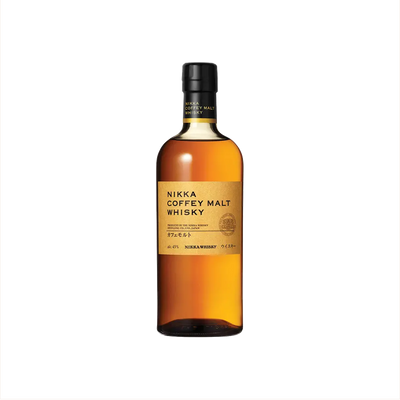Single Malt Japanese Whisky
What is Single Malt Japanese Whisky?
Single Malt Japanese Whisky represents the most refined expression of Japanese Whisky, produced exclusively from malted barley at a single distillery using traditional pot still methods. This category demands that every drop comes from one facility, though master blenders can marry different ages and cask types from their own stocks to create complex flavor profiles. The designation guarantees authenticity and showcases each distillery's unique character, from Yamazaki's fruit-forward elegance to Yoichi's peated intensity, making these bottles highly sought after by collectors worldwide.
Learn More About Single Malt Japanese Whisky
What makes Single Malt Japanese Whisky unique?
Single Malt Japanese Whisky stands apart from blended Japanese whiskies by using malted barley exclusively from one distillery, allowing the distinct character of each producer's house style to shine through without the smoothing influence of grain whisky or other distillery components. Unlike blended Japanese whiskies that combine multiple grain types and sources, single malts showcase the pure expression of each distillery's unique approach to fermentation, distillation, and maturation—whether that's Yamazaki's Mizunara oak influence, Hakushu's high-altitude alpine character, or smaller craft distilleries' innovative techniques. This focus on singular distillery expression means Japanese single malts often display more pronounced regional characteristics and production signatures compared to their blended counterparts, giving whisky lovers a direct window into each master distiller's individual craft.
How is Single Malt Japanese Whisky made?
Single malt Japanese whisky follows the traditional Scottish method, starting with malted barley that's mashed, fermented with yeast, and distilled twice in copper pot stills at a single distillery. The new-make spirit then ages in oak barrels for a minimum of three years, though most premium expressions mature much longer. Japanese distillers often use a variety of oak types including American oak, Japanese mizunara oak, and sometimes sherry casks, creating complex flavor profiles that reflect both traditional techniques and uniquely Japanese influences.
How do you drink Single Malt Japanese Whisky?
Single malt Japanese whisky shines brightest when sipped neat or with just a splash of water to open up its delicate flavors, though many enthusiasts also enjoy it on the rocks to appreciate its subtle complexity as it slowly dilutes. While purists might cringe, these whiskies work beautifully in refined cocktails like Japanese-style highballs with premium soda water, or in elegant variations of classics like the Old Fashioned where their gentle, nuanced character won't get lost. The precision and craftsmanship that defines Japanese whisky-making translates perfectly to quiet evening sipping sessions, formal dinners, or contemplative moments when you want to savor something truly special.
How do I choose good Single Malt Japanese Whisky?
Start by considering the distillery's house style—Yamazaki tends toward fruit and spice, while Hakushu leans grassy and smoky—then match your selection to your intended use. For sipping neat, splurge on aged expressions with complex flavor profiles, but for cocktails like a Japanese Old Fashioned or Mizuwari, younger bottlings work beautifully and won't break the bank. Pay attention to the specific flavor notes listed on the bottle: peated versions work magic in spirit-forward drinks, while honeyed, floral expressions shine when you want the whisky to be the star of simpler serves.
Nutritional Information
Typical Calorie Range per Ounce: 64-70 calories
Typical Carbohydrate Range per Ounce: 0-0.1 grams
Typical Sugar Range per Ounce: 0 grams
Typically Gluten Free: No
Single malt Japanese whisky is distilled from malted barley, which contains gluten proteins. While the distillation process removes most gluten, trace amounts may remain. Individuals with celiac disease or severe gluten sensitivities should consult with their healthcare provider and check detailed product information from specific distilleries to confirm gluten-free status, as production methods can vary between brands.
Scrolled this far? Your reward? Single Malt Japanese Whisky Trivia!
- Japan's whisky industry started because of Scottish fog. Masataka Taketsuru, the father of Japanese whisky, chose the Yoichi distillery location in Hokkaido specifically because morning mist rolled in from the sea just like it did in Scotland. He believed this humid air was essential for proper aging, and turns out he was right – that coastal moisture creates the perfect microclimate for developing those signature Japanese whisky flavors.
- Japanese distilleries refuse to share. Unlike Scottish distilleries that freely trade whisky between companies, Japanese producers keep everything in-house. Suntory won't sell a drop to Nikka, and vice versa. This means each distillery must produce every style of whisky they need for blending, leading to incredible diversity within single facilities and explaining why Japanese whiskies taste so distinctively different from their Scottish cousins.
- The legendary Karuizawa distillery made whisky at 3,280 feet above sea level – higher than any Scottish distillery. Located in the Japanese Alps, this extreme altitude created intense temperature swings that pushed whisky in and out of barrel wood like a bellows, creating incredibly concentrated flavors in record time. When the distillery closed in 2000, remaining bottles became some of the most expensive whiskies ever sold at auction.
- Japanese whisky makers use bamboo charcoal filtering, a technique borrowed from sake production. This bincho-tan charcoal filtering removes harsh edges while preserving delicate flavors that would be stripped away by traditional methods. The result? That impossibly smooth, clean finish that makes Japanese whisky so distinctive and approachable, even at high proof.
- Mizunara oak, Japan's native wood, was only used for aging whisky because of wartime rationing. During WWII, distilleries couldn't import American or European oak, so they turned to local mizunara trees. The wood proved nearly impossible to work with – it leaks and cracks easily – but creates magical flavors of sandalwood, coconut, and Japanese incense. Today, mizunara casks are so prized that cooperages have decade-long waiting lists.
Higher-proof spirits can be intense. Mix carefully, taste thoughtfully, and enjoy responsibly.
Gift message (optional)

